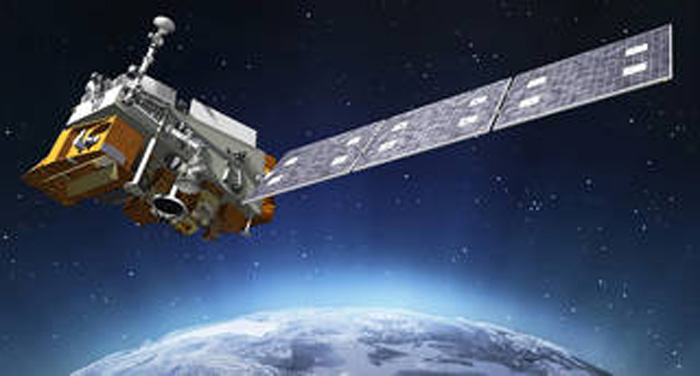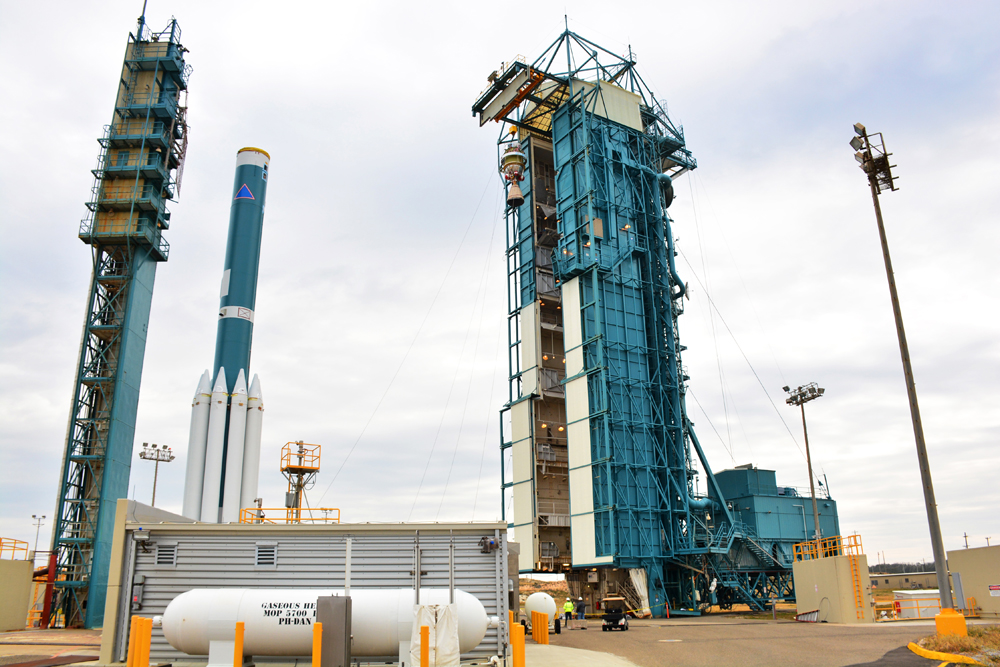Eagle-Eyed JPSS-1 Weather Satellite to Launch Nov. 14 After Delay
After more than a year of preparations for liftoff, NASA will launch the first of four brand-new weather satellites next week after a four-day delay due to a battery glitch.
The Joint Polar Satellite System-1 (JPSS-1) will launch no earlier than Nov. 14 from California's Vandenberg Air Force Base aboard a United Launch Alliance Delta II rocket. The mission, part of the space agency's collaboration with the National Oceanic and Atmospheric Administration (NOAA), was initially scheduled to launch Friday, Nov. 10. But NOAA officials announced yesterday (Nov. 6) that a faulty battery on the Delta II booster prompted the delay.
"The delay allows the team time to replace the battery on the Delta II booster," NOAA officials wrote in a statement. "The vehicle and spacecraft remain stable." [Earth from Space: The Amazing Photos by GOES-16]
The Joint Polar Satellite System is a partnership between NASA and NOAA, according to a recent NASA statement: NASA develops, builds and launches the instruments, and NOAA funds and manages the program operations.

JPSS-1 will be renamed NOAA-20 when the spacecraft reaches its orbit at 512 miles above Earth's surface. At that point, it will make regular and varied environmental observations from space, allowing NOAA to more accurately warn the public about extreme weather systems. NOAA-20 will also assist in tracking less episodic — but nevertheless alarming — environmental developments, such as poor air quality. All this information will be accessible by both domestic and international users via the Global Earth Observation System of Systems (GEOSS) network.
The NOAA-20 satellite will traverse the globe about twice every day, and will pass over the equator about 14 times in that time span, according to NASA. As the spacecraft travels from one pole to the other during its 10-year mission, it will observe surface and atmospheric temperatures, clouds, rainfall, snow and ice cover, water vapor, vegetation and the ozone layer.

Built by Ball Aerospace of Boulder, Colorado, the first stage of the ULA Delta II rocket reached the base back on April 4, 2016, and the intermediate and second stages arrived later that month. About a year later, on April 11, 2017, technicians hoisted the second stage atop the first stage of the rocket. The weather satellite arrived to Vandenberg on Sept. 1, and following preflight preparations, it was encapsulated and mounted atop the Delta II rocket.
Get the Space.com Newsletter
Breaking space news, the latest updates on rocket launches, skywatching events and more!
Future satellites planned for the JPSS mission include JPSS-2, scheduled for launch in 2021. JPSS-3 is scheduled to go into orbit in 2026, and JPSS-4 in 2031.
Editor's note: This story was updated to include the four-day launch delay due to a Delta II rocket battery issue.
Follow Doris Elin Salazar on Twitter@salazar_elin. Follow us @Spacedotcom, Facebook and Google+. Original article on Space.com.
Join our Space Forums to keep talking space on the latest missions, night sky and more! And if you have a news tip, correction or comment, let us know at: community@space.com.

Doris is a science journalist and Space.com contributor. She received a B.A. in Sociology and Communications at Fordham University in New York City. Her first work was published in collaboration with London Mining Network, where her love of science writing was born. Her passion for astronomy started as a kid when she helped her sister build a model solar system in the Bronx. She got her first shot at astronomy writing as a Space.com editorial intern and continues to write about all things cosmic for the website. Doris has also written about microscopic plant life for Scientific American’s website and about whale calls for their print magazine. She has also written about ancient humans for Inverse, with stories ranging from how to recreate Pompeii’s cuisine to how to map the Polynesian expansion through genomics. She currently shares her home with two rabbits. Follow her on twitter at @salazar_elin.
